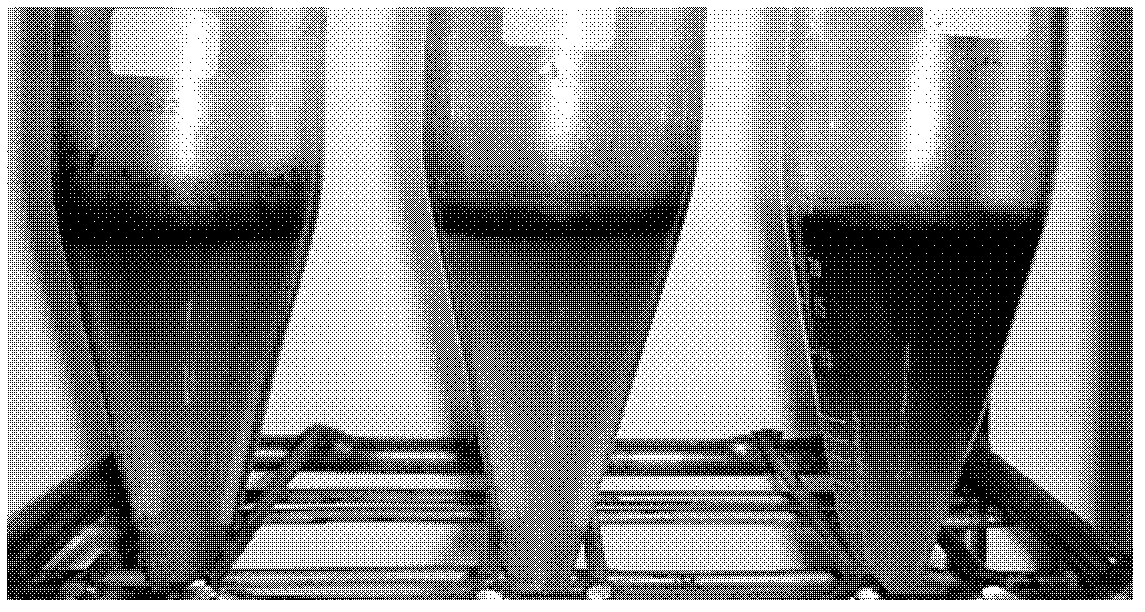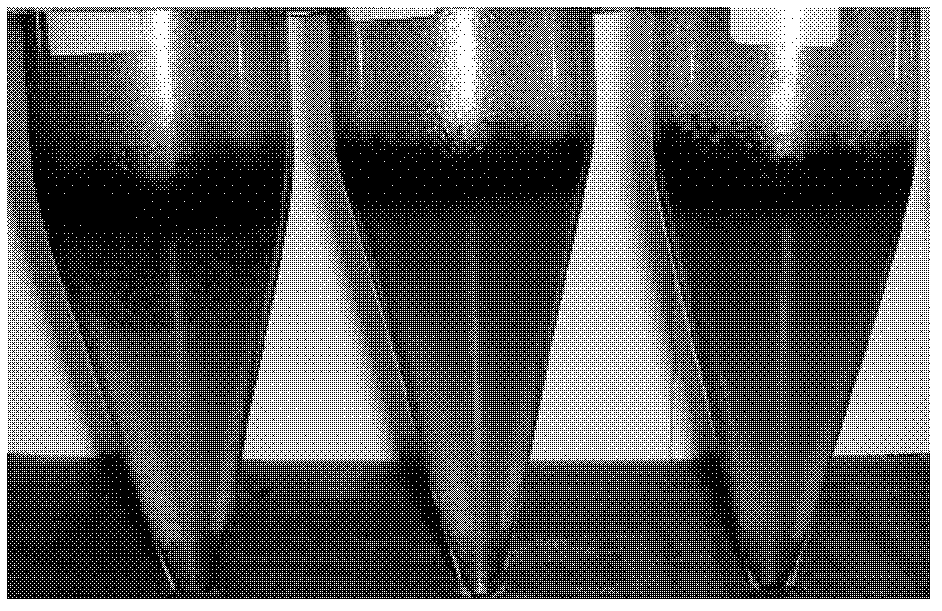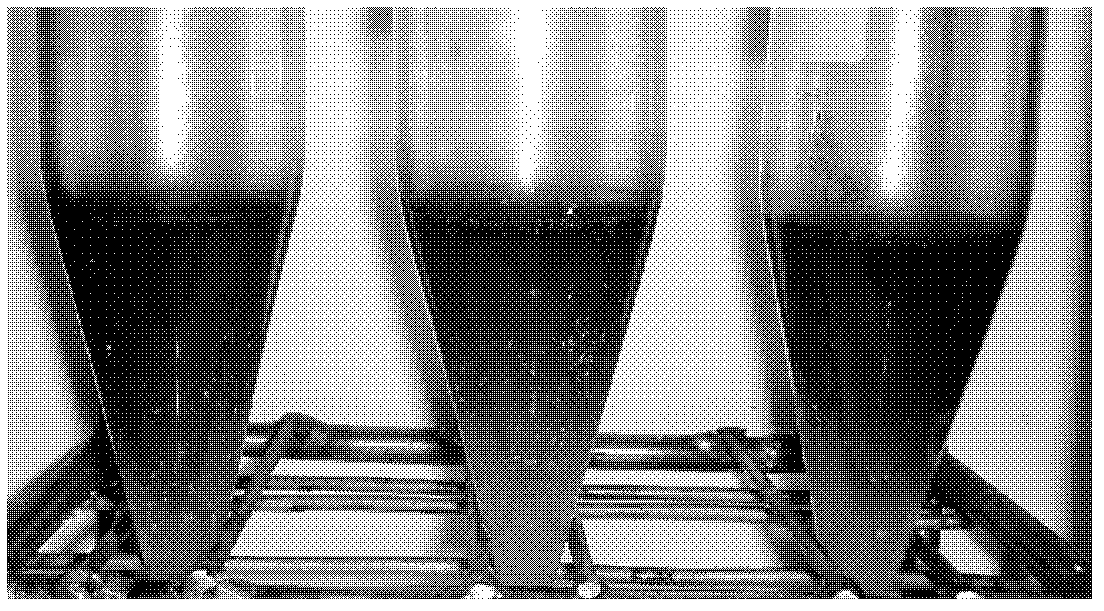Method for treating polymer-driven oilfield sewage
A treatment method and oilfield sewage technology, which is applied in the direction of flocculation/sedimentation water/sewage treatment, mining wastewater treatment, etc., can solve the problems of increased flocculant consumption, easy blockage of process flow, etc., and achieve the effect of excellent water purification effect
- Summary
- Abstract
- Description
- Claims
- Application Information
AI Technical Summary
Problems solved by technology
Method used
Image
Examples
Embodiment 1
[0024] Embodiment 1, purify sewage with block polyether J121 and cationic polymer S58
[0025] Take 25mL of oil field sewage, put it in a constant temperature box at 65°C for 1 hour, add block polyether J121 and cationic polymer S58 respectively after taking it out, the total concentration is 200mg / L, and the ratio of the two is 2:1, 1 : 1 and 1: 2, and shake it by hand for 1 min to mix evenly. Among them, the mixed agent with a mass ratio of 1: 1 has good oil removal and water purification effects after treatment, and no obvious flocs are produced, such as figure 1 shown.
Embodiment 2
[0026] Embodiment 2, purify sewage with block polyether J402 and cationic polymer S58
[0027] Take 25mL of oil field sewage, put it in a constant temperature box at 65°C for 1 hour, add block polyether J402 and cationic polymer S58 respectively after taking it out, the total concentration is 100, 200, 250mg / L, that is, the mass ratio of the two 1:1, 2:1, and 4:1, respectively, and mixed by hand for 1 min. Among them, the 2:1 mixed agent has better oil removal and water purification effects after treatment, and the amount of flocs is less, such as figure 2 shown.
Embodiment 3
[0028] Example 3, Purify sewage with block polyether J121 and cationic polymer S42
[0029] Take 25mL of oil field sewage, put it in a constant temperature box at 65°C for 1 hour, add block polyether J121 and cationic polymer S42 respectively after taking it out, the total concentration is 200mg / L, and the ratio of the two is 2:1, 1 : 1 and 1: 2, and shake it by hand for 1 minute to mix evenly. Among them, the mixed agent with a mass ratio of 1: 1 has a slightly better treatment effect, no obvious floc formation, and has a certain degreasing effect, such as image 3 shown.
PUM
 Login to View More
Login to View More Abstract
Description
Claims
Application Information
 Login to View More
Login to View More - R&D
- Intellectual Property
- Life Sciences
- Materials
- Tech Scout
- Unparalleled Data Quality
- Higher Quality Content
- 60% Fewer Hallucinations
Browse by: Latest US Patents, China's latest patents, Technical Efficacy Thesaurus, Application Domain, Technology Topic, Popular Technical Reports.
© 2025 PatSnap. All rights reserved.Legal|Privacy policy|Modern Slavery Act Transparency Statement|Sitemap|About US| Contact US: help@patsnap.com



